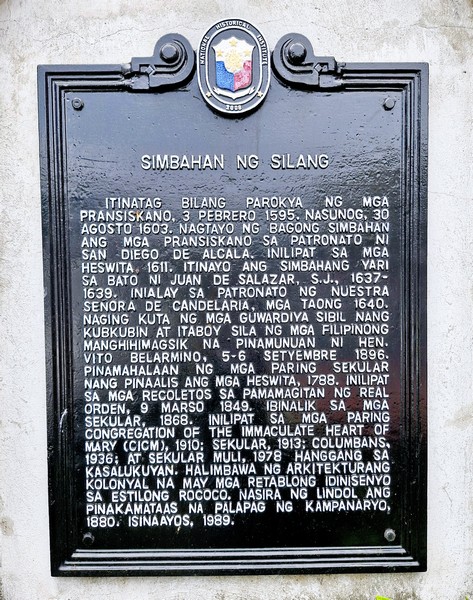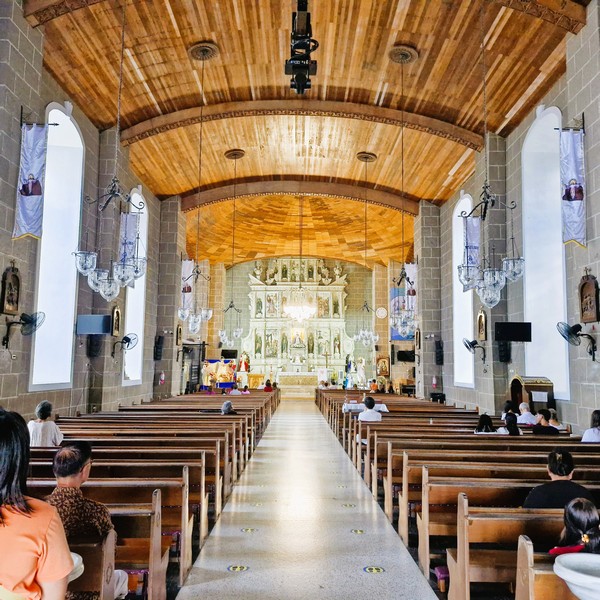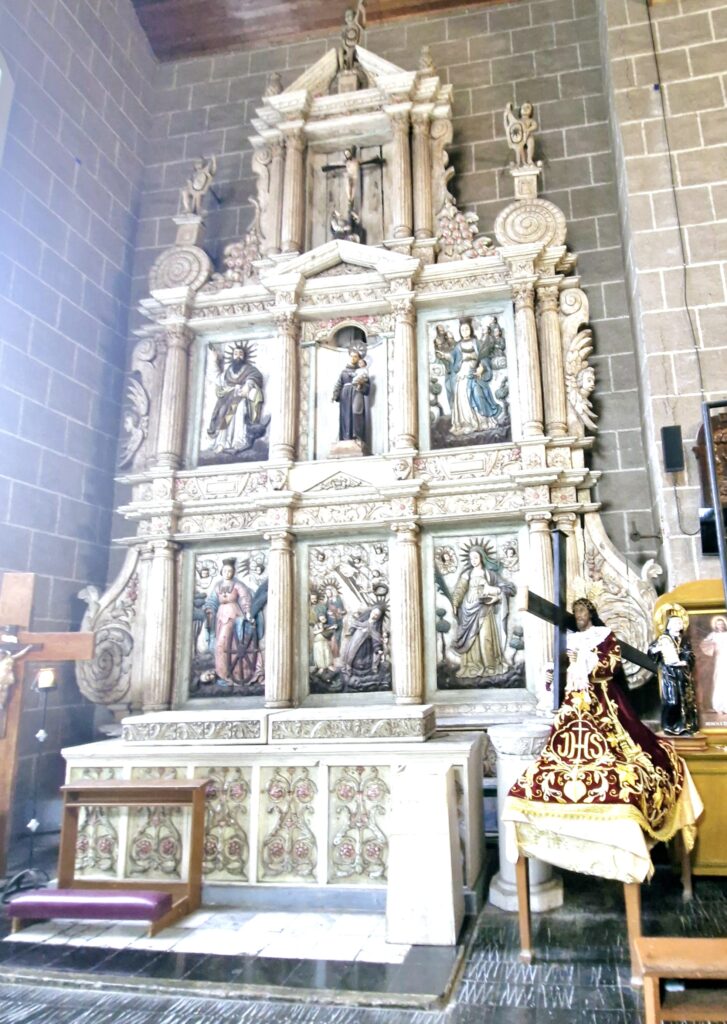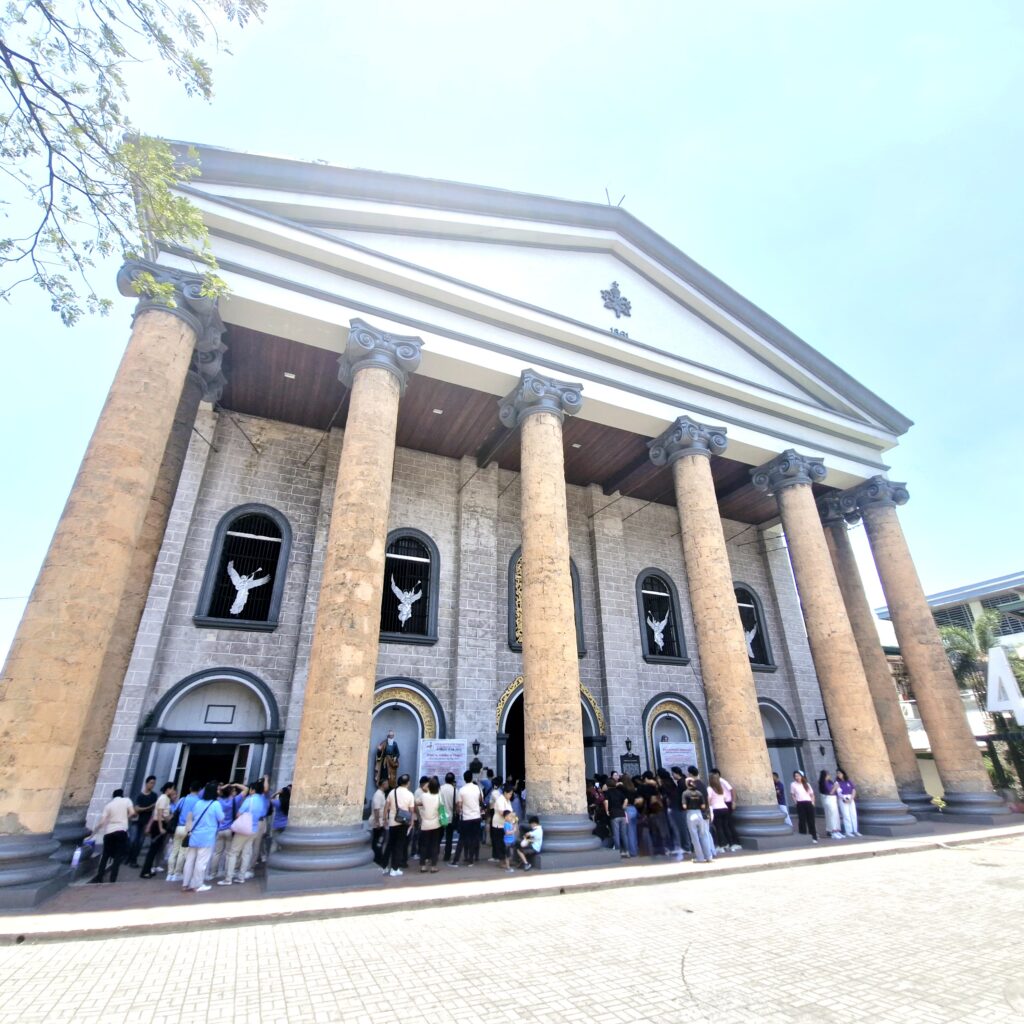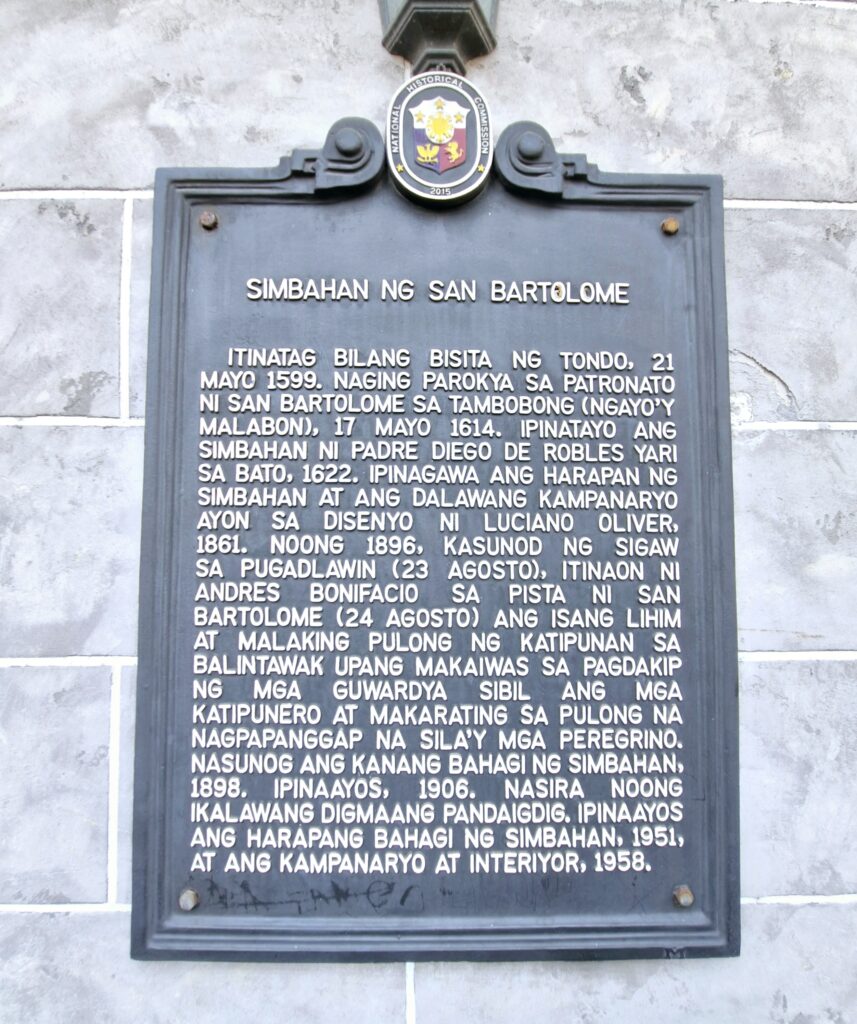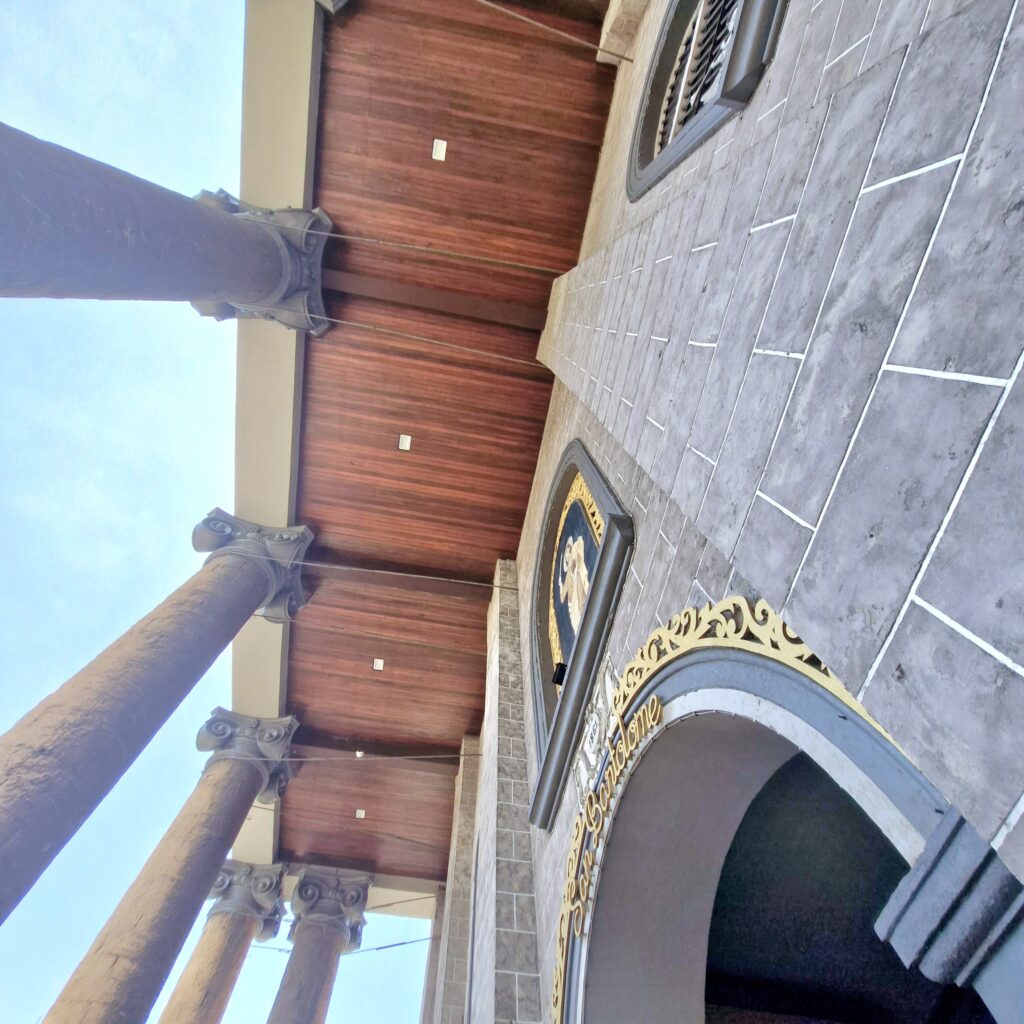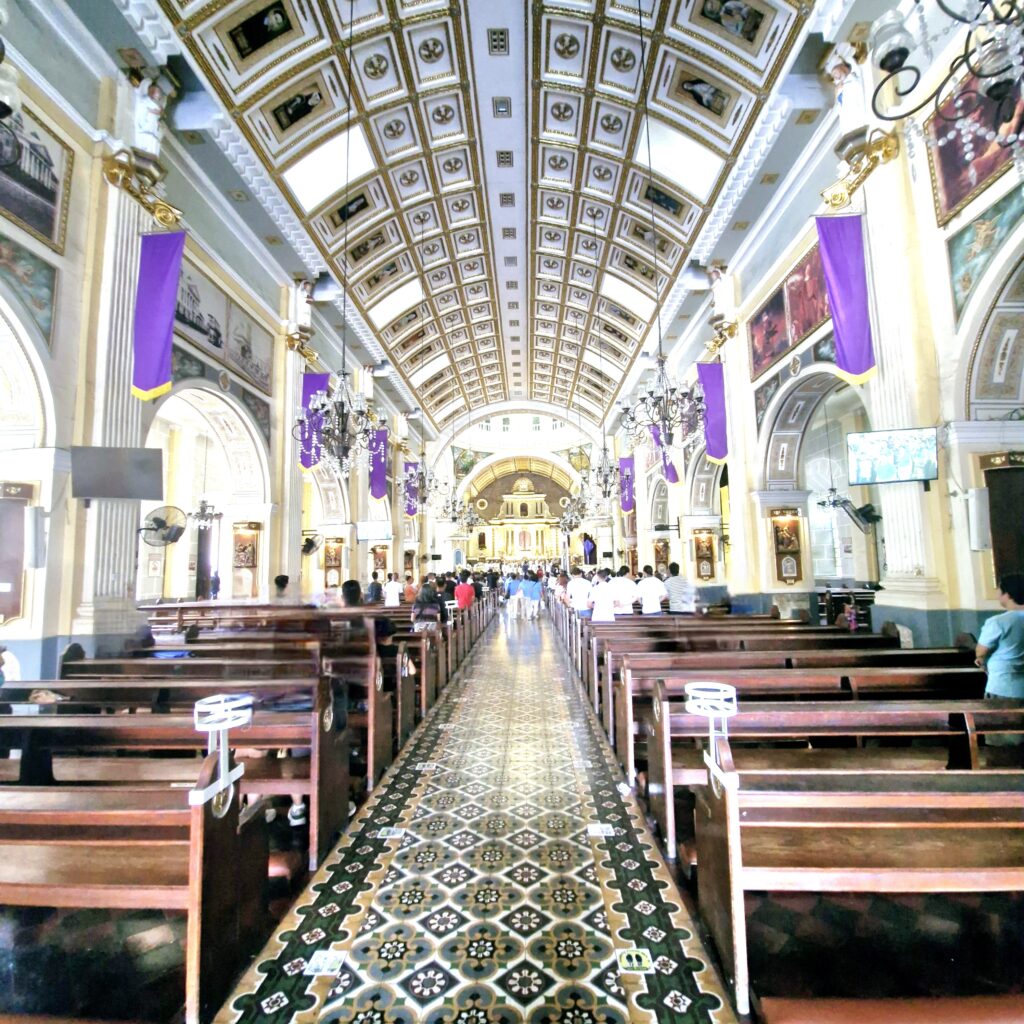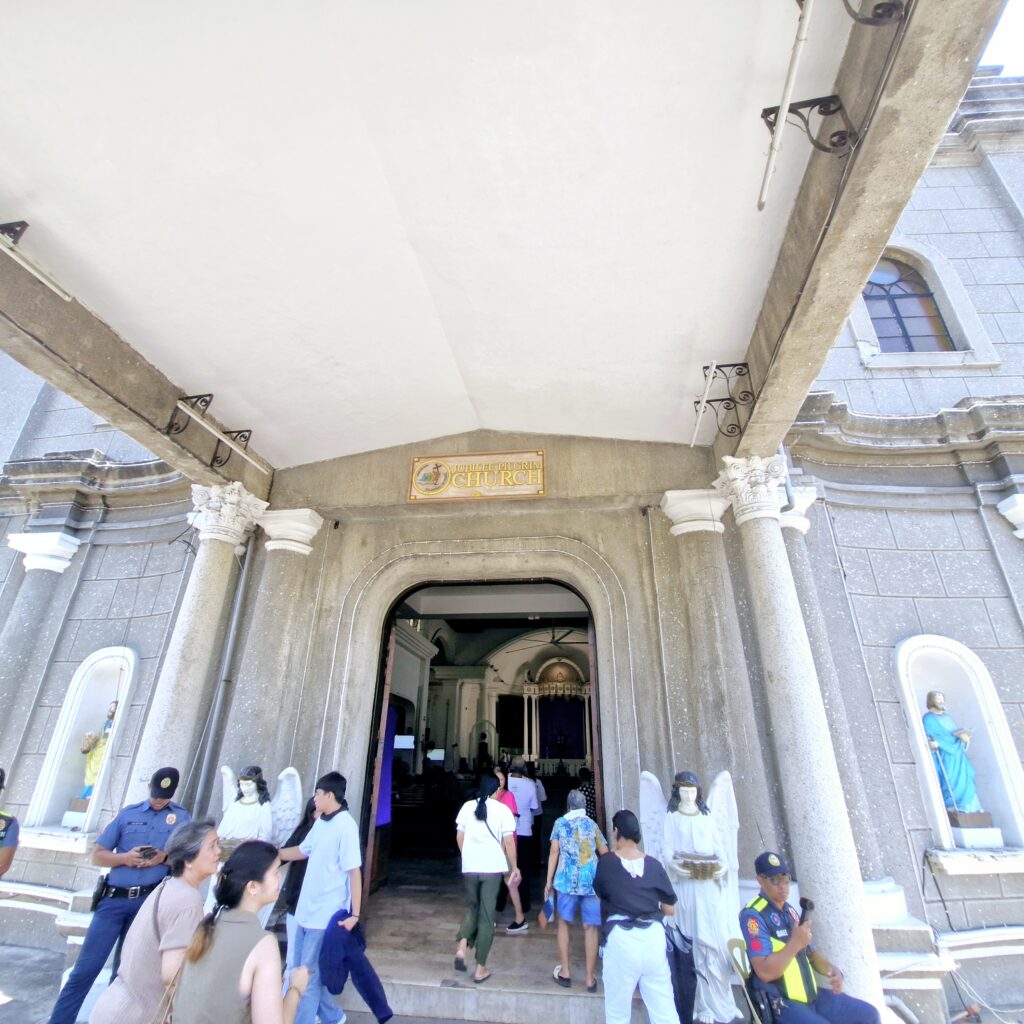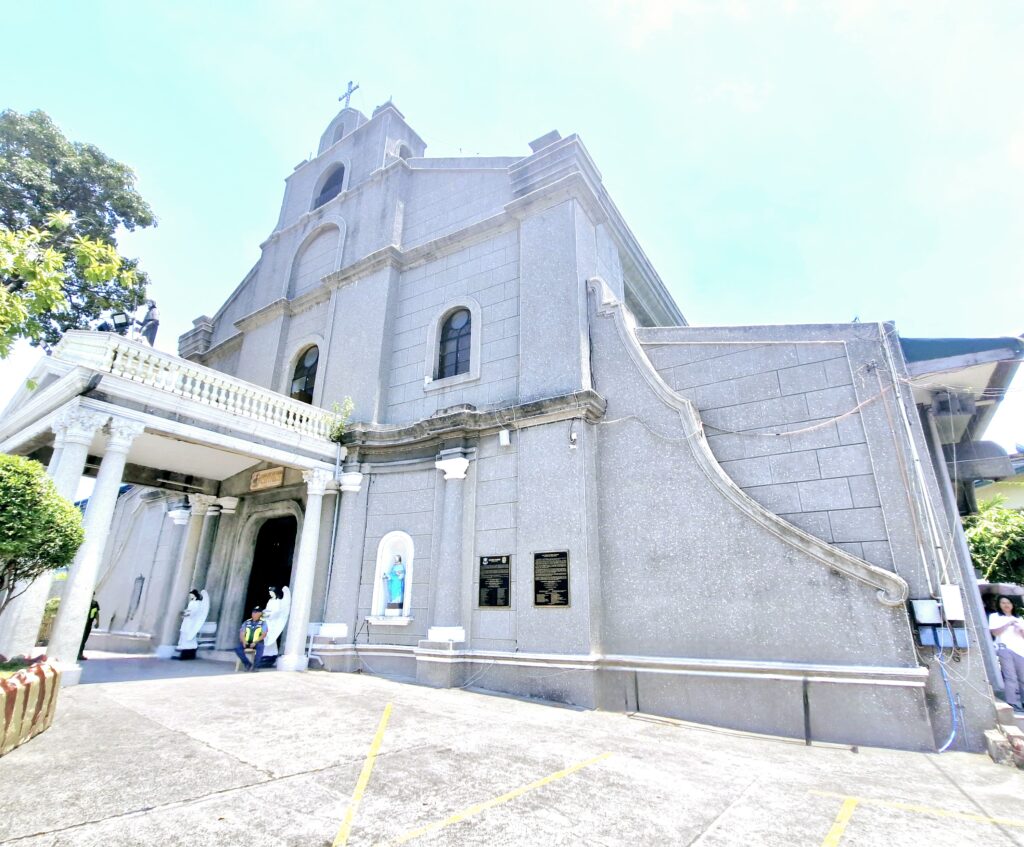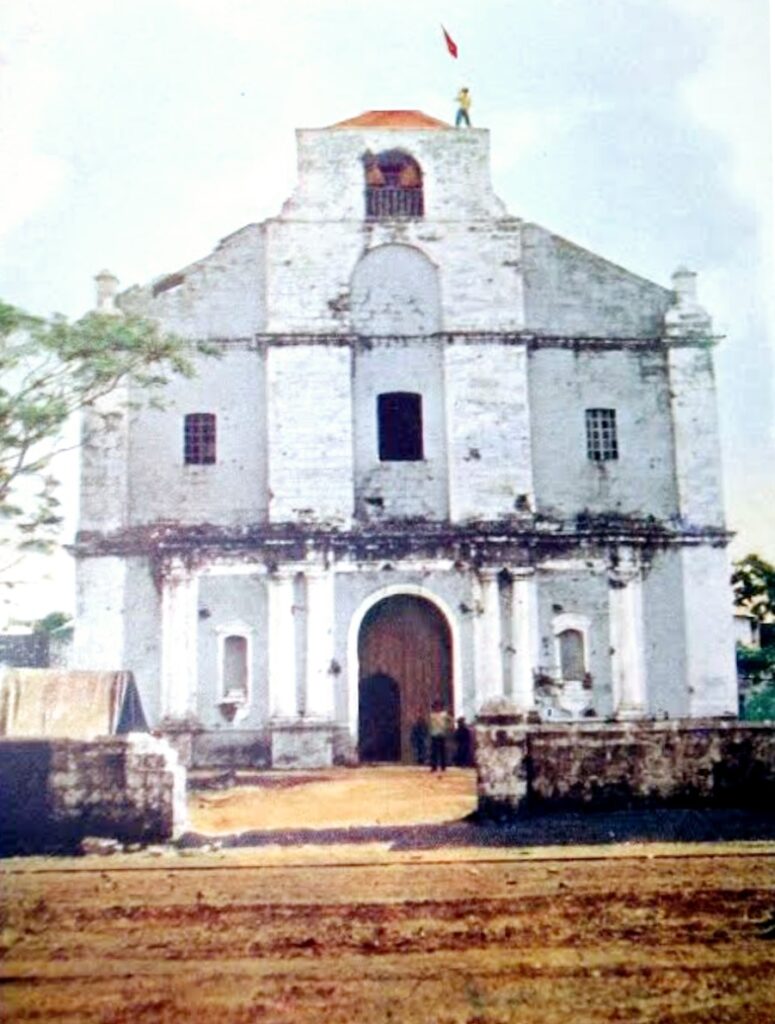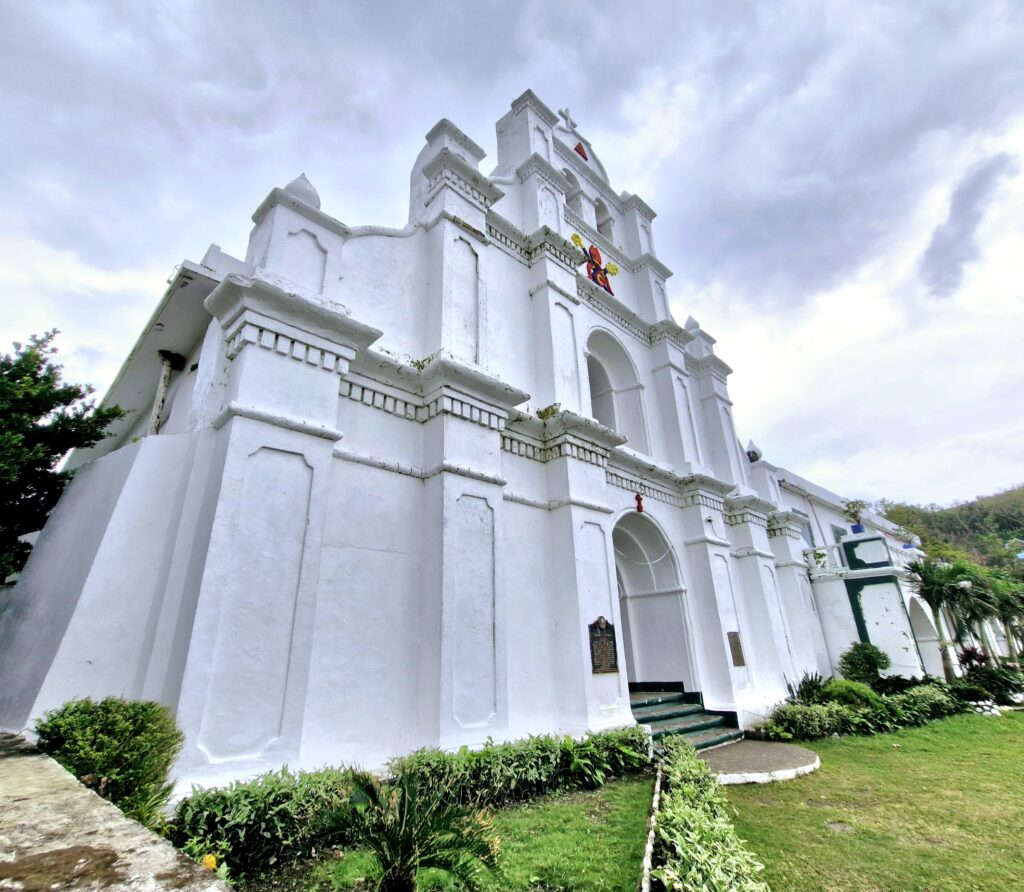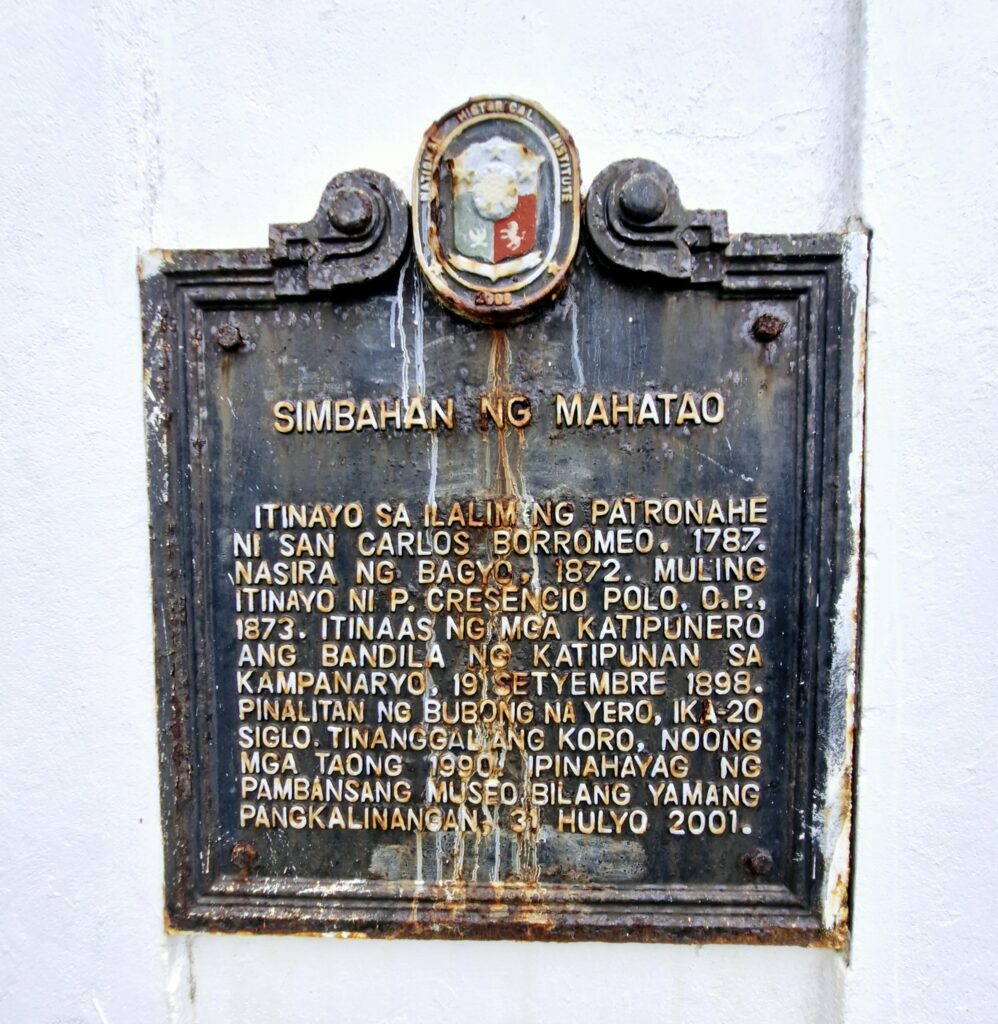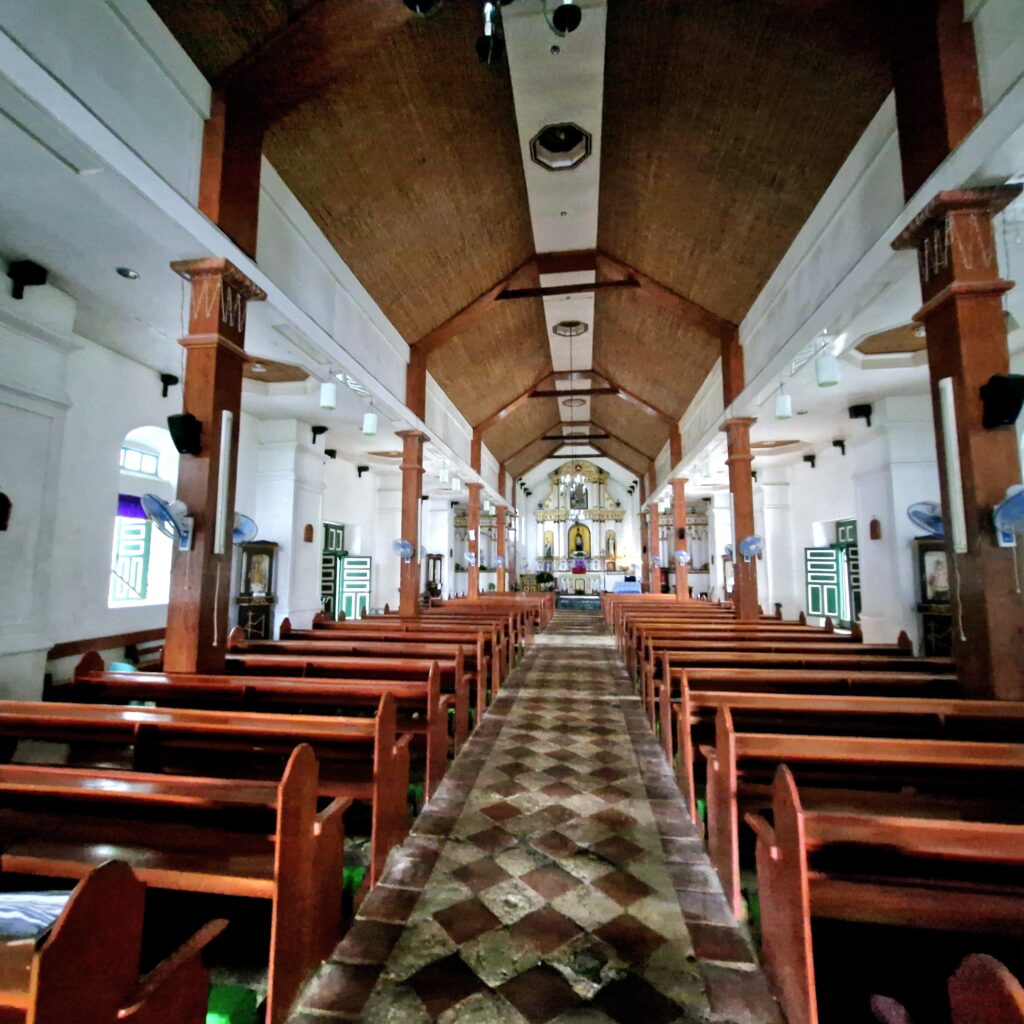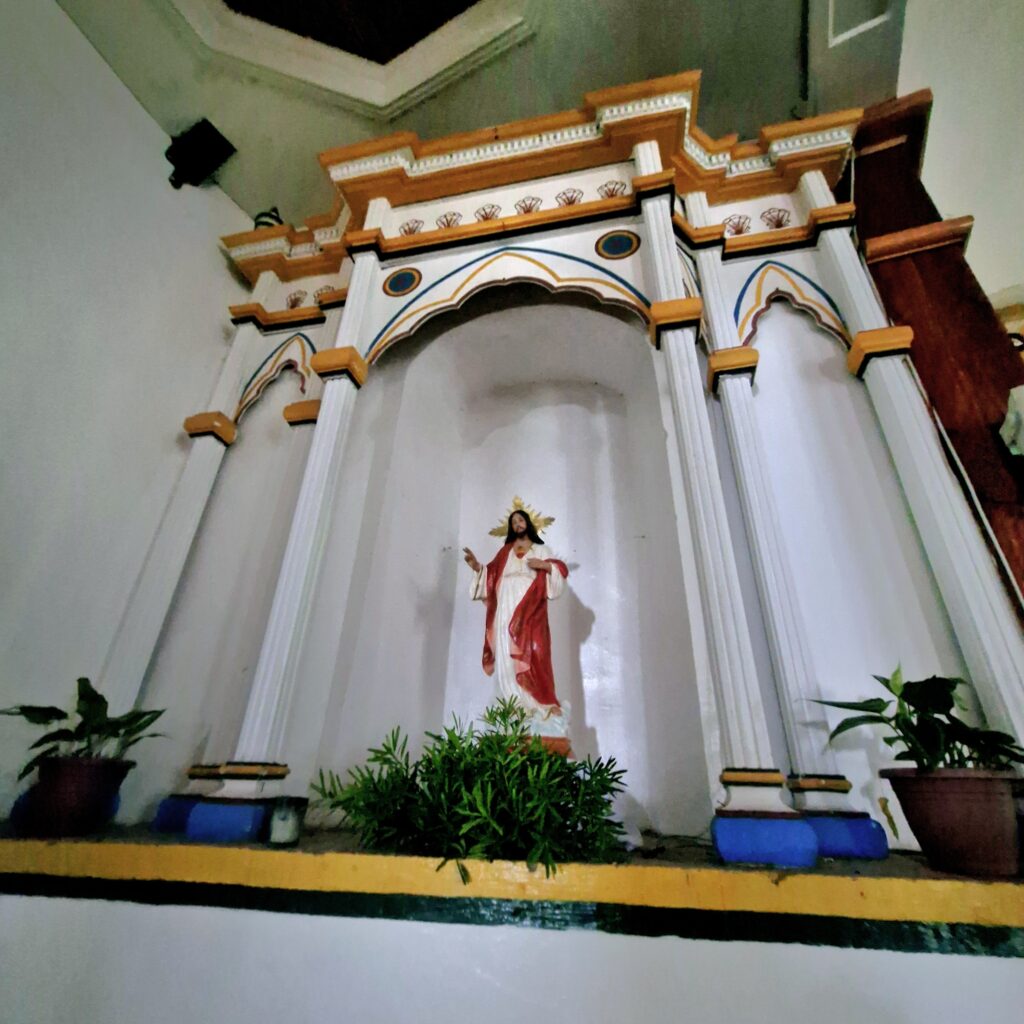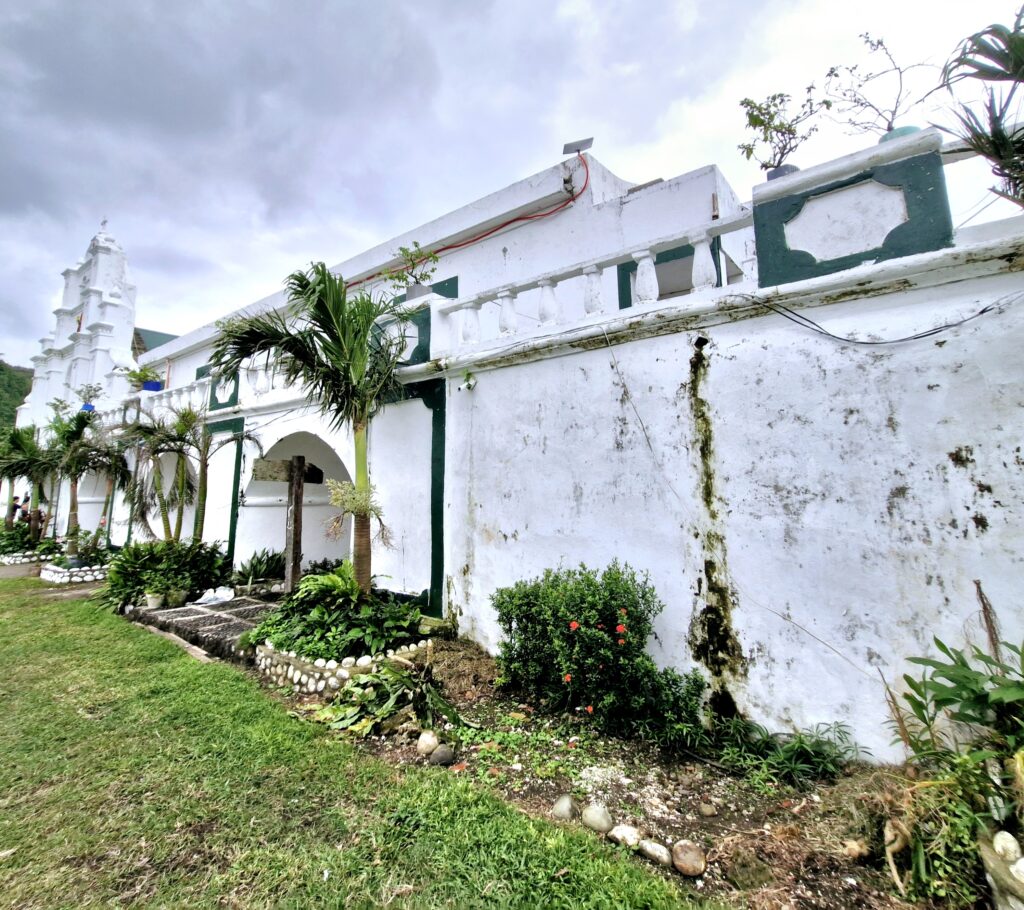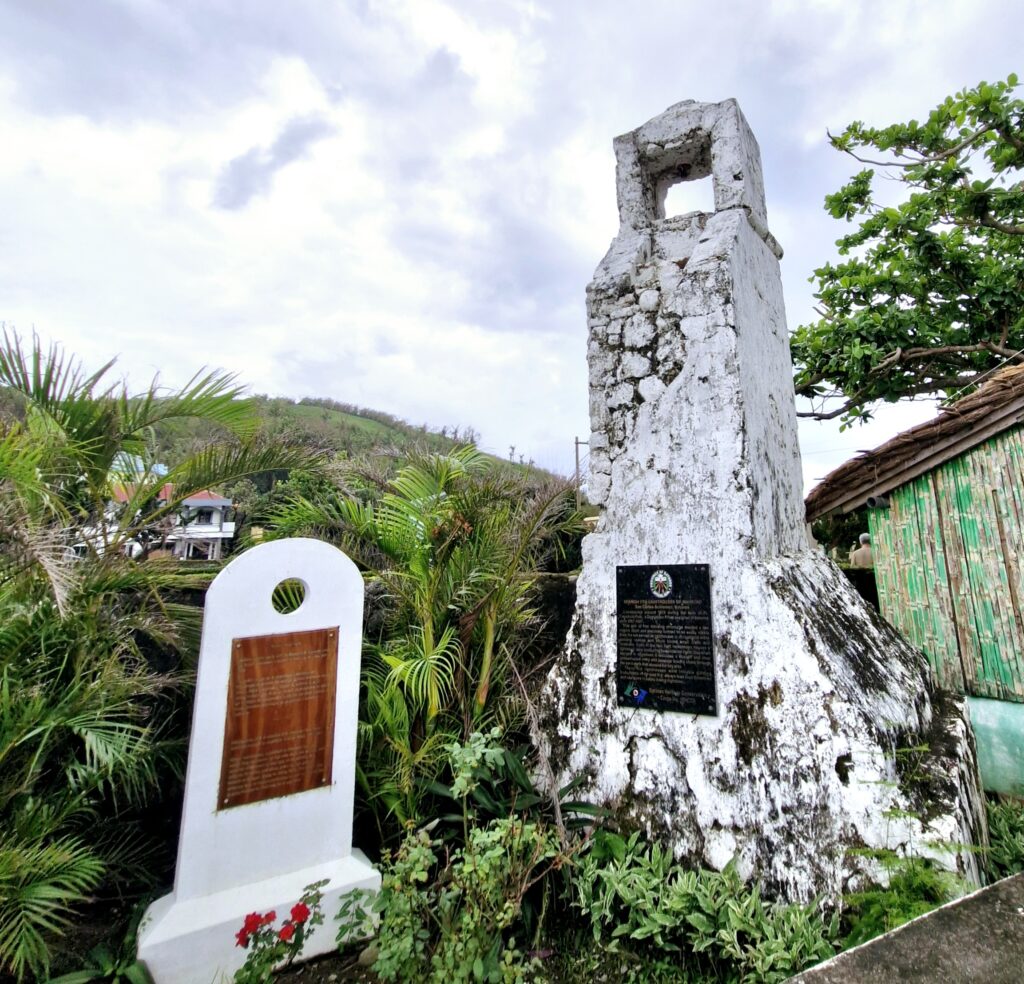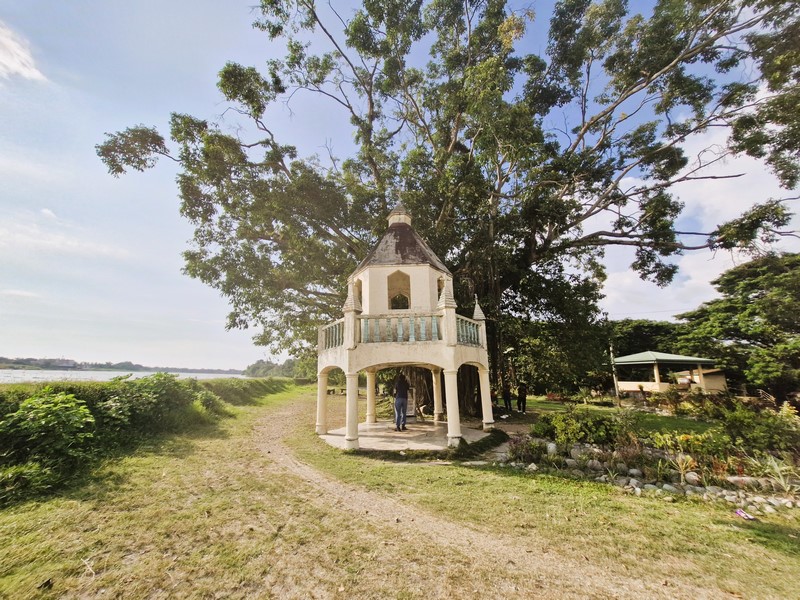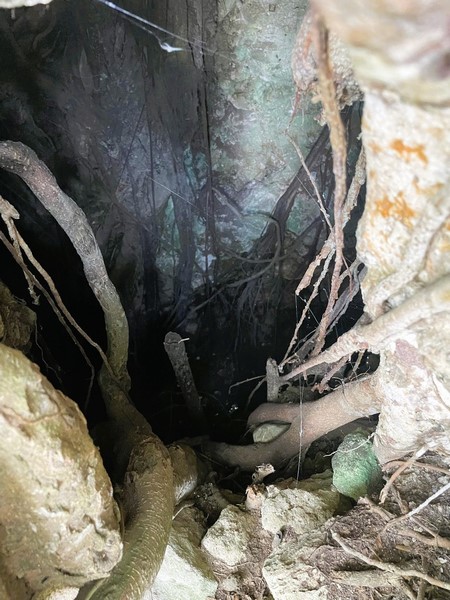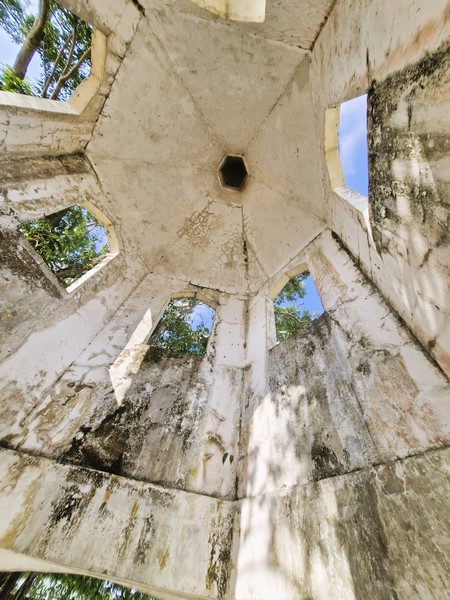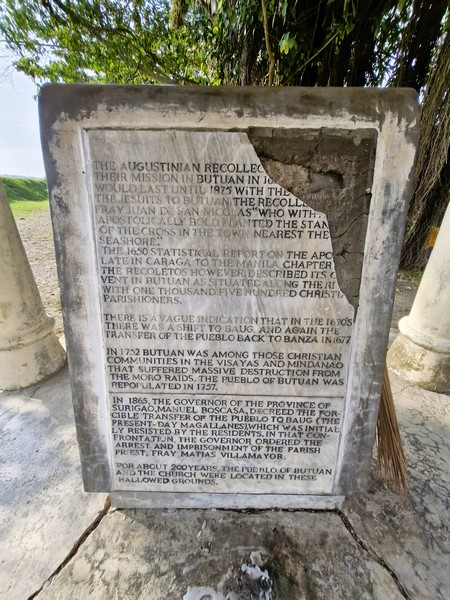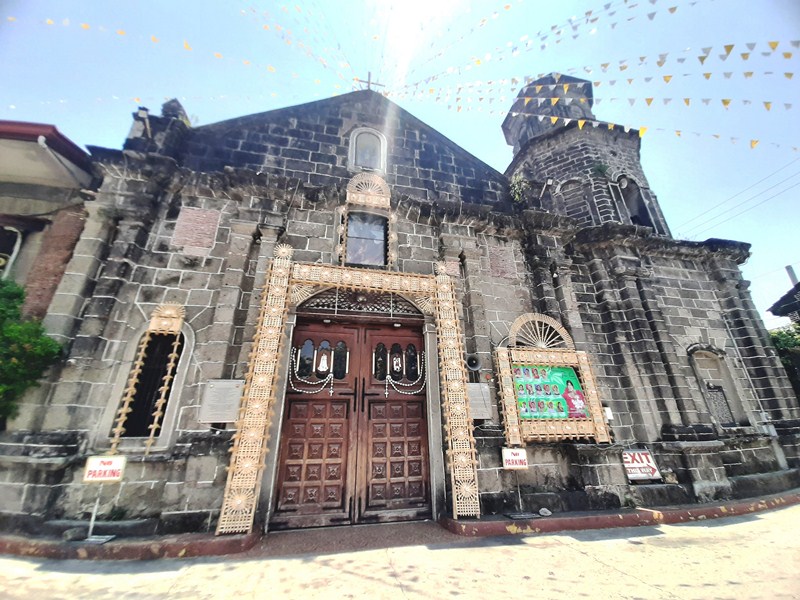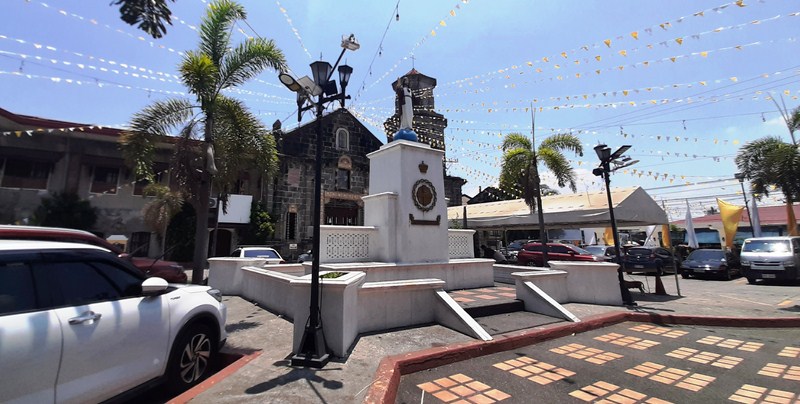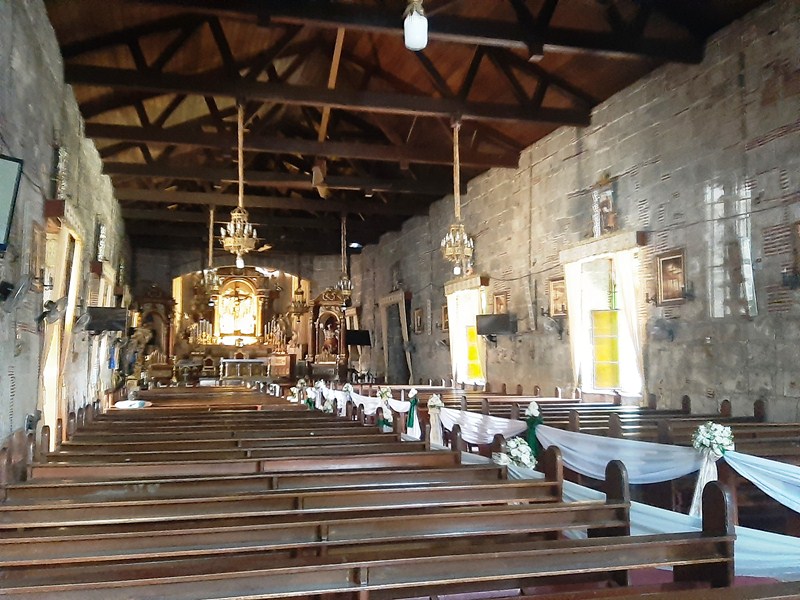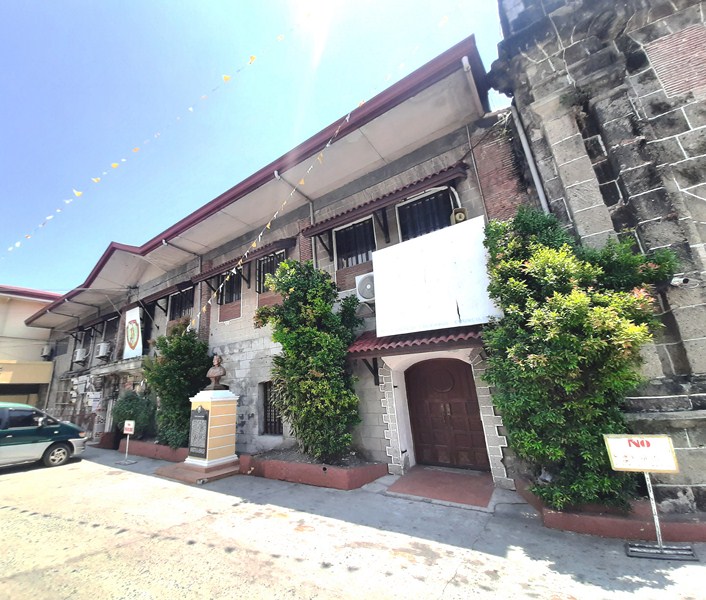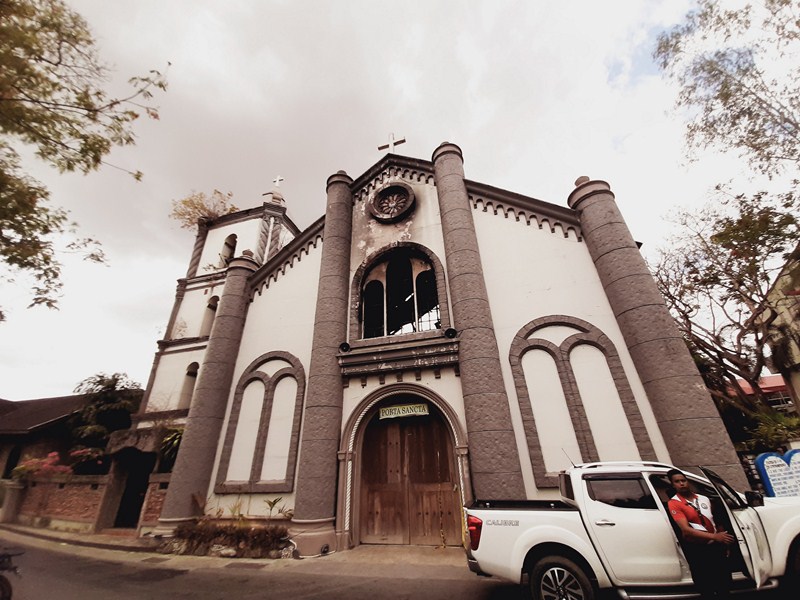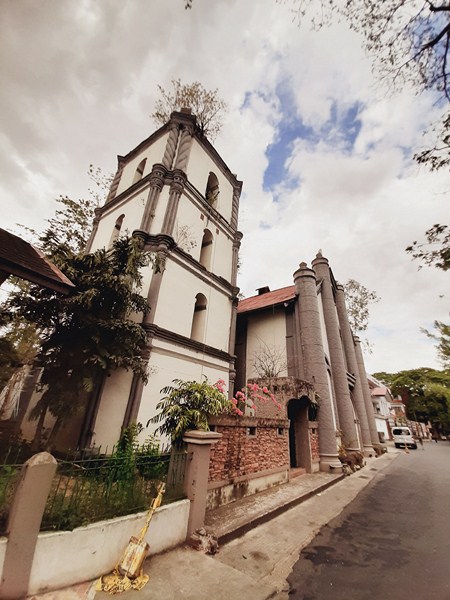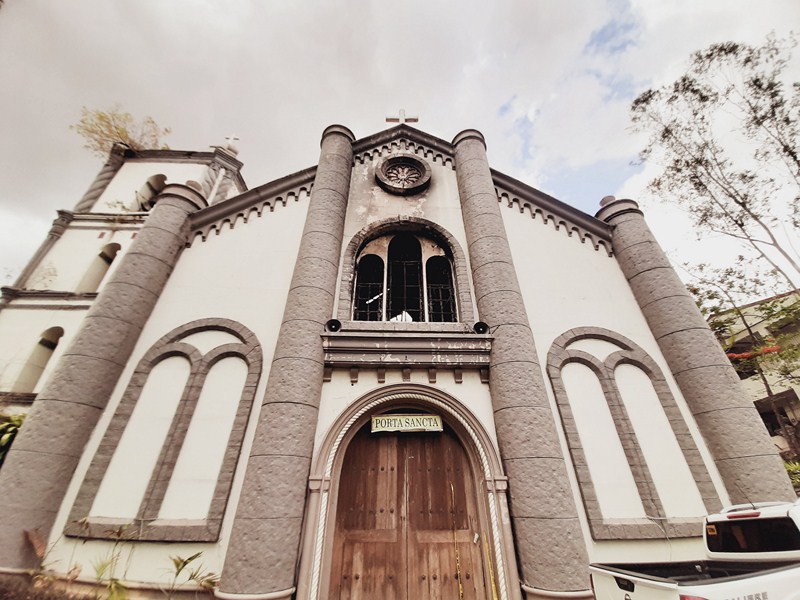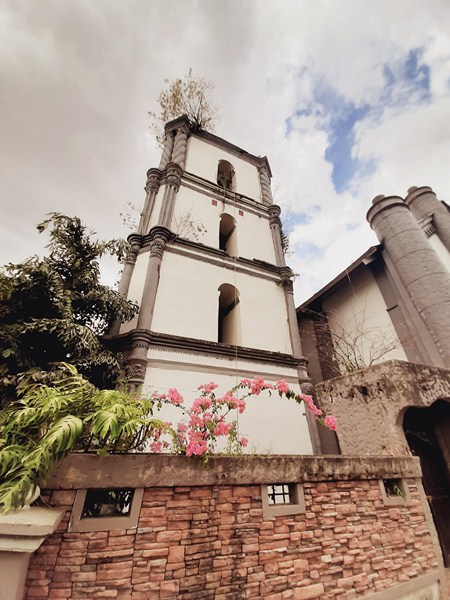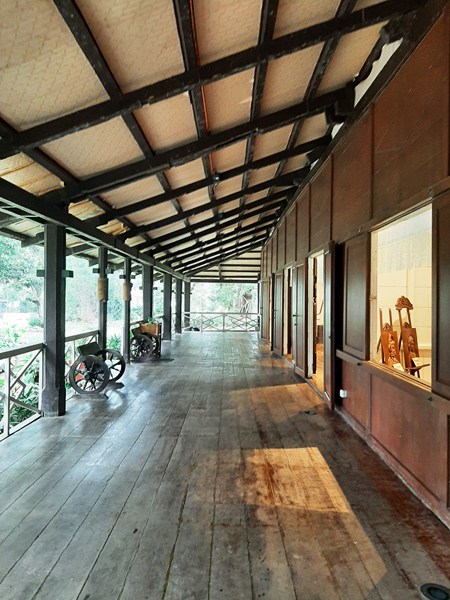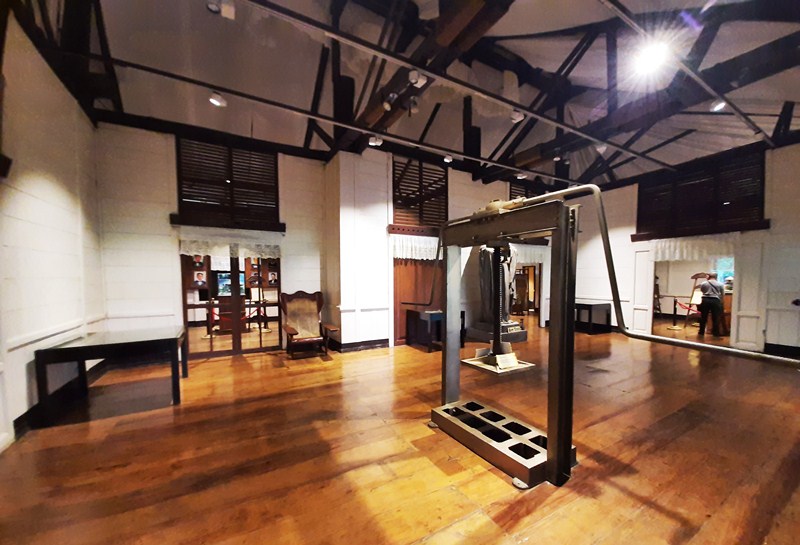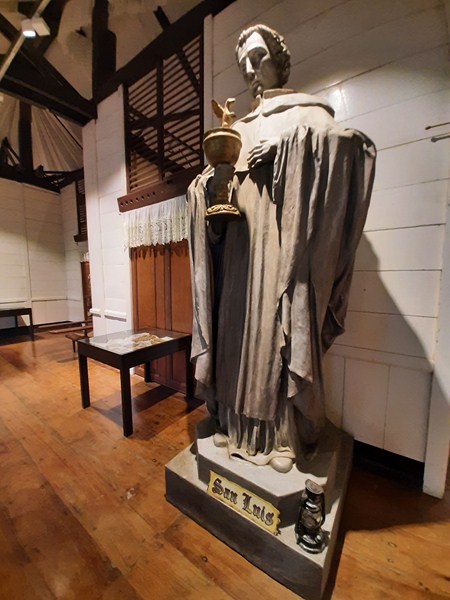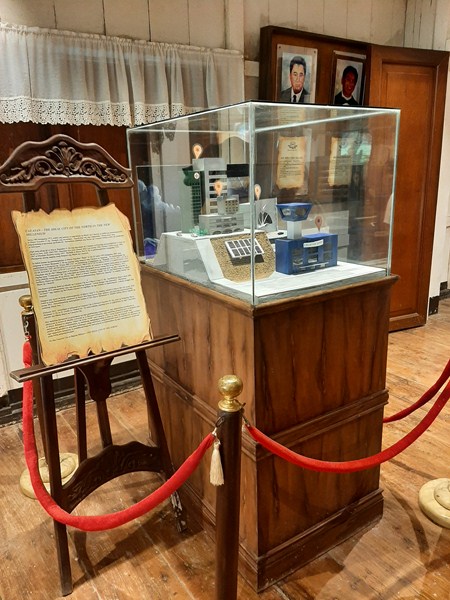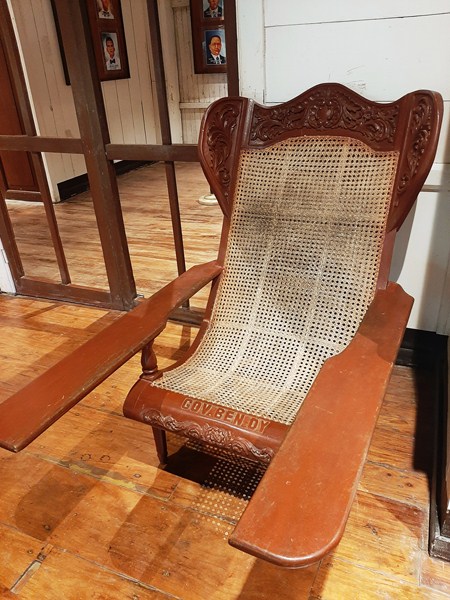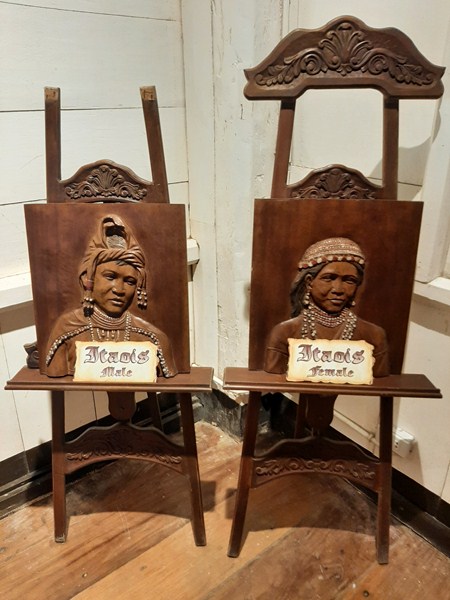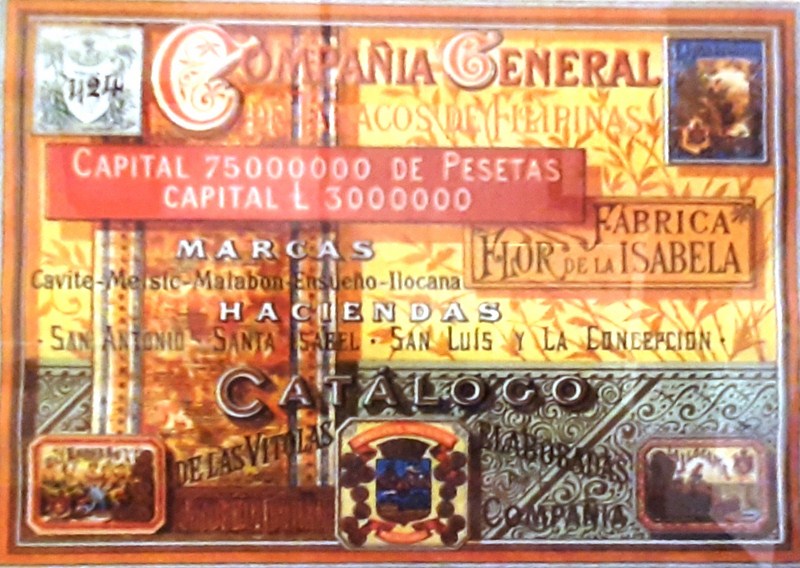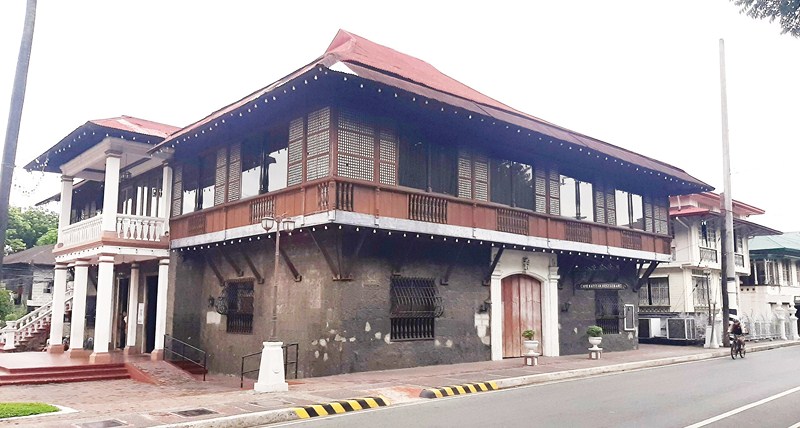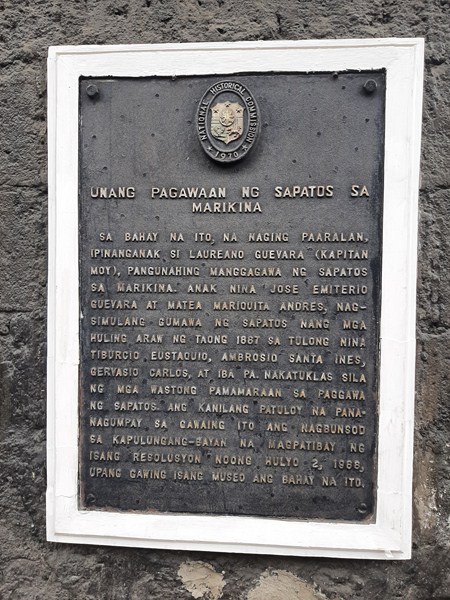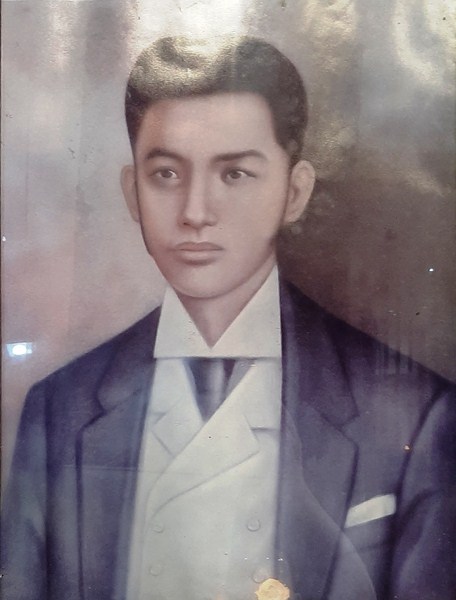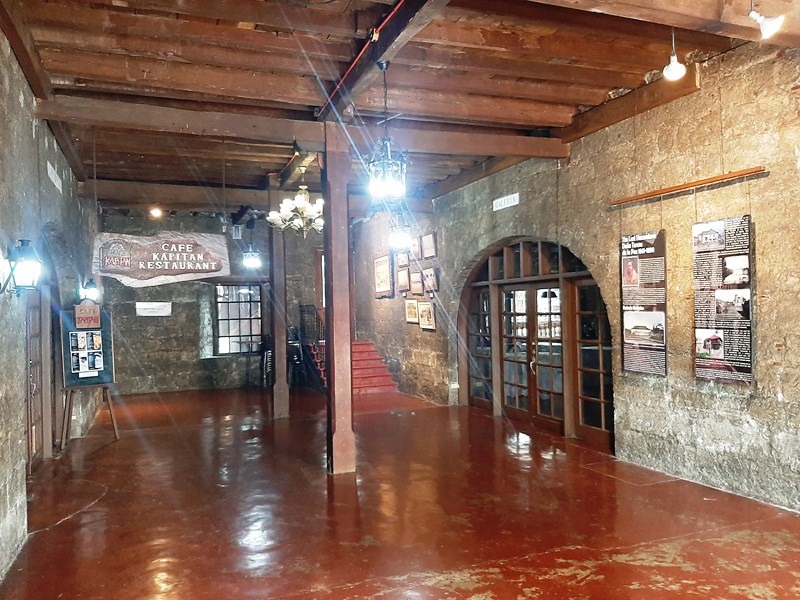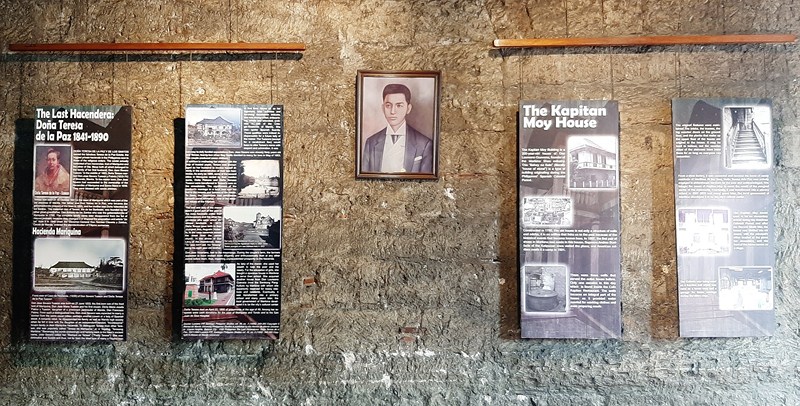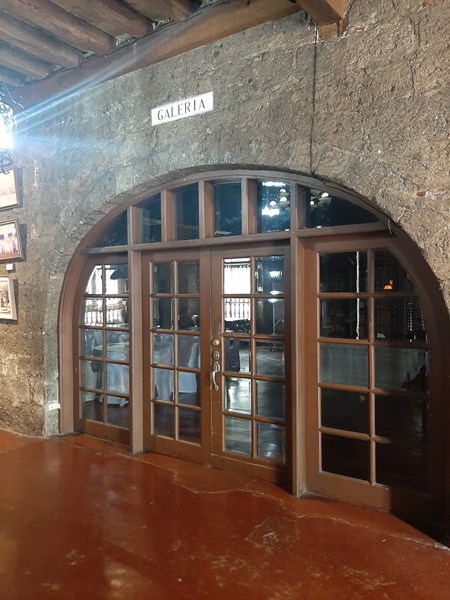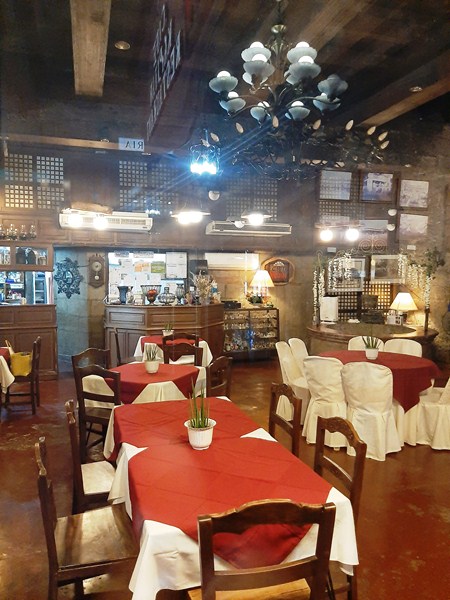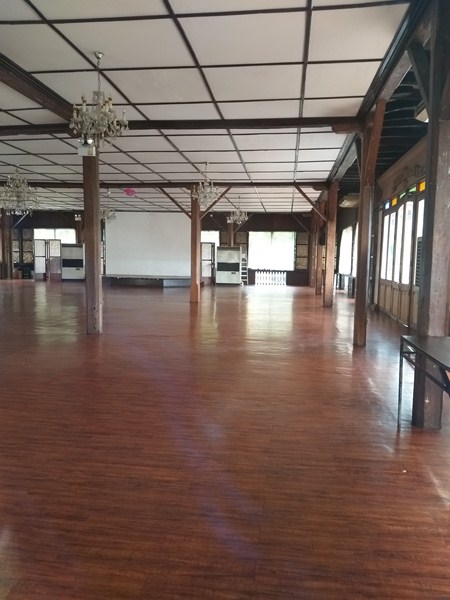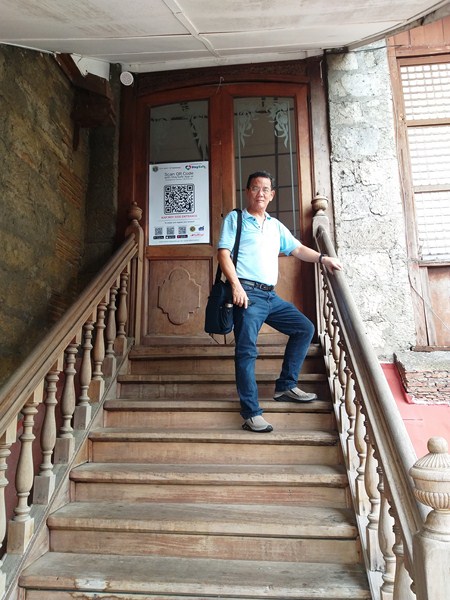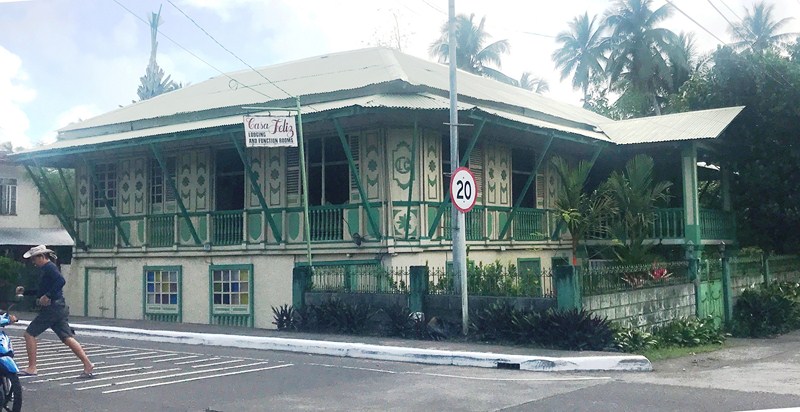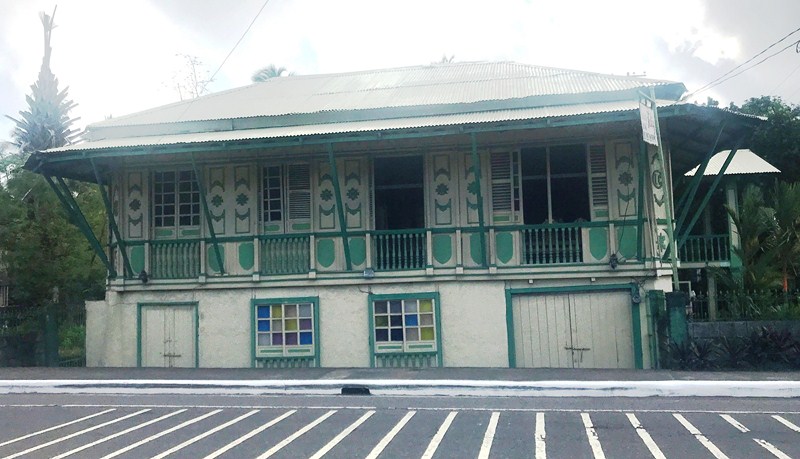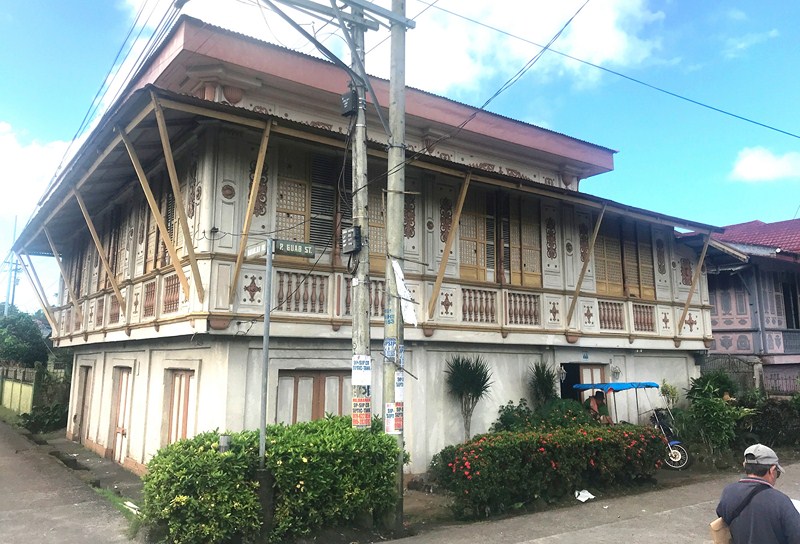This church, under the Diocese of Imus, is the oldest existing stone church in the province of Cavite, having been completed in 1639. The church and school was first built in 1585 by Franciscan missionaries through forced labor but was destroyed by fire on August 30, 1603. That same year, the church was then rebuilt in wood by Jesuit friars, damaged by an earthquake and rebuilt in stone by Fr. Juan Salazar from 1637 to 1639 and was dedicated to the Nuestra Senora de Candelaria (Our Lady of Candles) in 1640.
During the July 1880 earthquake, the fourth storey of the belfry was destroyed and, during the Philippine Revolution, the church was used by the Guardia Civil (Civil Guards) until they were expelled by Gen. Vito Belarmino on from September 5-6, 1896. In 1937, the original wooden floor was replaced by red clay tiles. Due to a fire in 1950, the ceiling was replaced one meter away from the original location. In 1989, the bell tower restored to its original height. On February 3, 2017, the church and retablo of the Our Lady of Candelaria Parish was declared a National Cultural Treasure by the National Museum of the Philippines and, on May 4, 2021, the church was elevated into a Diocesan Shrine.
The church has a cruciform plan with lateral walls supported by buttresses. The two-storey convent, adjacent to the church, is located on the northeast.
AUTHOR’S COMMENTS:
The church’s simple, two-level Baroque façade, without any elaborate and magnificent ornamentation, is divided, horizontally, by moldings. It has a semicircular arched main entrance with large wooden doors at the first level, a semicircular arched niche, flanked by rectangular windows, with a statue of the patroness, and a triangular pediment with a centrally located rose window and topped by a cross. The massive pilasters at the ends are topped by urn-like finials. The four-storey belfry, connected to the main church, has a quadrilateral first floor while the rest of the floors are octagonal.
Inside are three ornate Baroque-style altars, with distinct, Rococo-influenced retablos with multi-level platforms – one main altar (retablo mayor) and two side altars (colaterales) in each side of the transepts which are mirror images of each other. All are noted for the presence of local styles such as plants, fruits, flowers, volutes or circular designs and millipedes; and decorative motifs of foliage, angel heads, acanthus crenelations, cartouches and empty rectangles.
The altars, built from 1643 to 1663, were restored, through application of varnish, during the 1970s by Talleres de Maximo Vicente. In 1989, revarnishing, for preservation, was done. In 2002, the original pastel color of the retablo was restored by carefully removing layers of lacquer, modern varnish, paraffin and soot. In 2004, to complement the modern-day adobe wall-cladding, the golden pillars were restored to beige, with a hint of avocado green, and its rouge flowers to pink. The ceiling height was also restored to its original location. During the 21st century restoration, a statue of St. Paul holding a sword, located at the right-most portion of the retablo, was stolen, never recovered and a replica was used to replace the original statue.
The two three-level side altars have fluted Ionic columns and Corinthian columns; statues of angels, holding shields, on top of the altars; and three niches, at the first and second levels, and a single niche at the third level. They contain reliefs except for the central niche of the second storey. One side altar is dedicated to women saints, saints in the New Testaments and martyrs, while the other is dedicated to the Jesuit saints.
The three-level altar mayor, the largest and highest altar among the three altars, has six reliefs; seven alternating niches for saints; reliefs and same divisions like the side altars; and garlanded Corinthians and salomonicas, separating the retablo sections, instead of fluted Corinthian columns.
The six reliefs, depicting the story of Jesus in the life of Mary based on the Mysteries of the Holy Rosary are Ang Pagbisita (Visitation of the Angel Gabriel to Mary), Ang Panunulúyan (Re-enactment of the journey of St. Joseph and Mary in search for lodging in Bethlehem), Ang mga Mago (The Three Kings), Ang Presentasyon sa Templo (The Presentation of Jesus at the Temple), Ang Koronasyon (The Coronation of Mary) and, on the topmost level, a relief of the Sto, Niño de Ternate. At the central niche of the first level is the image of the Nuestra Señora de Candelaria (Our Lady of Candles), the patroness of Silang. Found in the mountains, the statue would always get lost. When she was transferred, she was then called La Anuncieta.
Diocesan Shrine and Parish of Our Lady of Candles: J.P. Rizal St., Poblacion, Silang, 4188 Cavite. Tel: (046) 414-0352. Feast of Our Lady of Candles: February 2.
How to Get There: Silang is located 63.3 kms. (a 1.5-hour drive) from Manila and 19.7 kms. (a 30-min. drive) from Trece Martires City.



